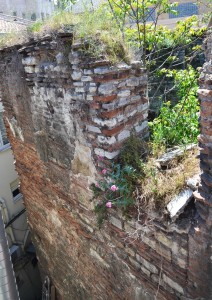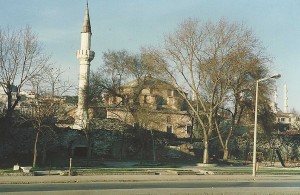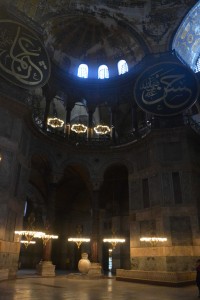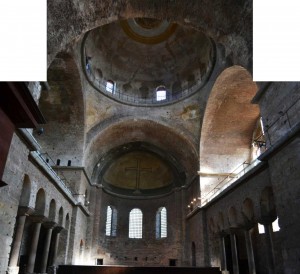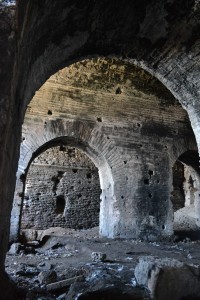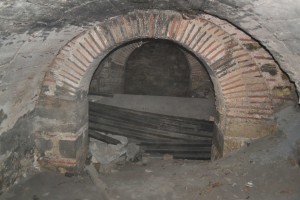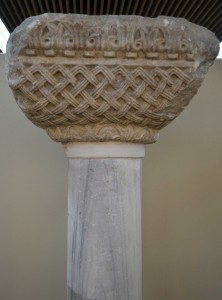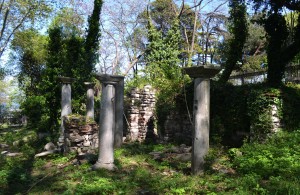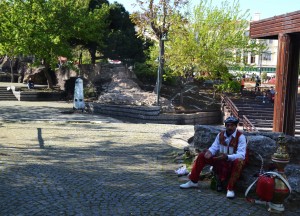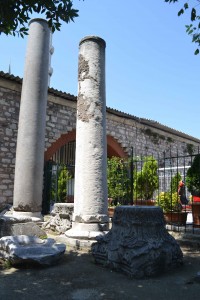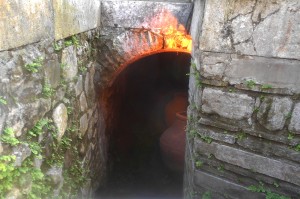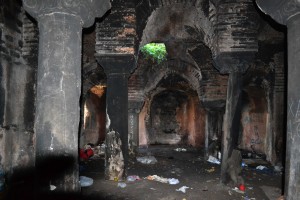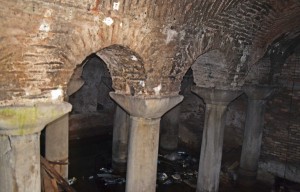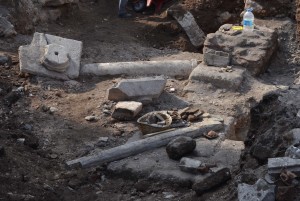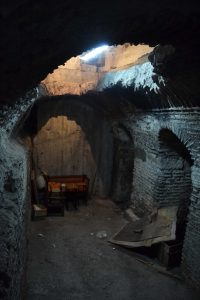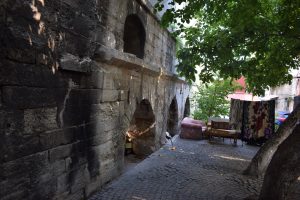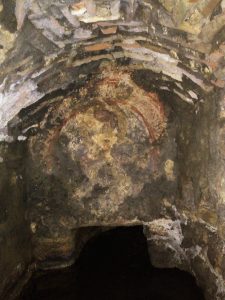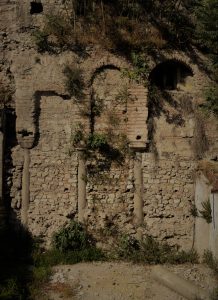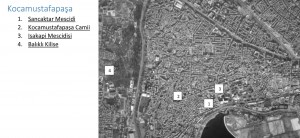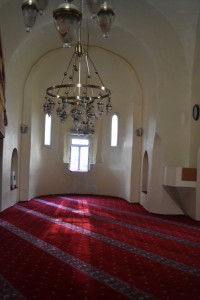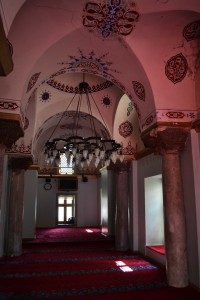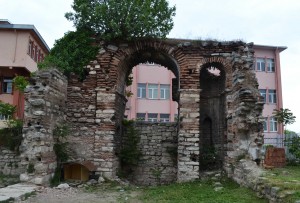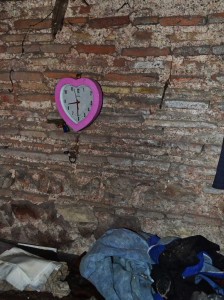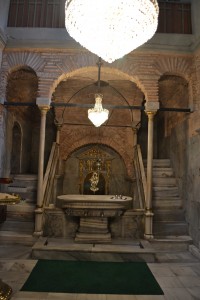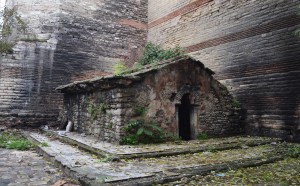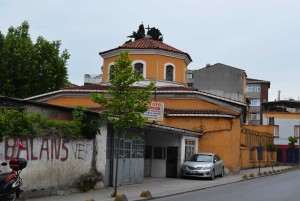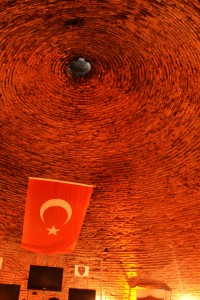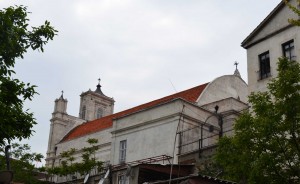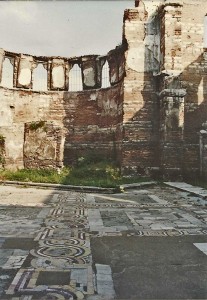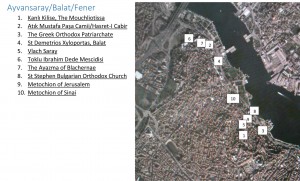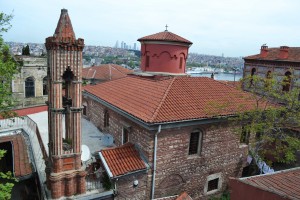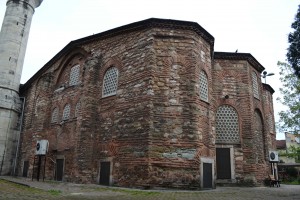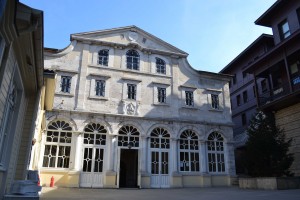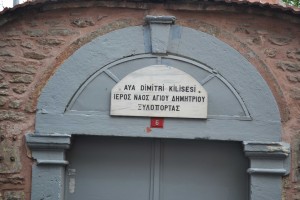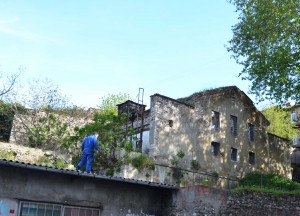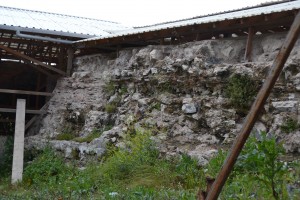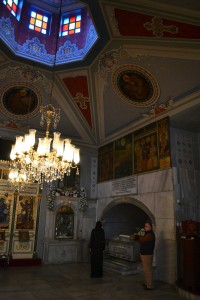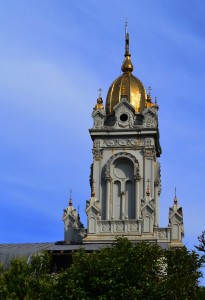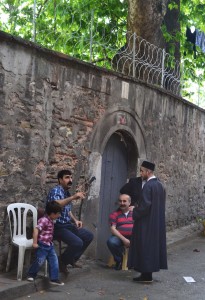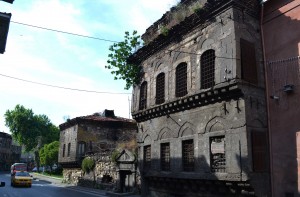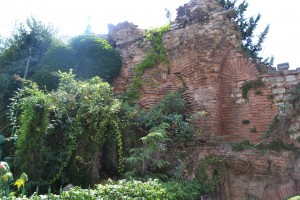The centre of the world in Byzantine times. The area is dominated by the massive Aya Sofya and its slightly smaller partner, Aya Ireni. Just down the hill is the idiosyncratic Küçük Aya Sofya, the Church of Saints Sergius and Bacchus. Apart from those, it’s all ruins. Half of Saray Burnu itself is a military zone and the rest is covered by Topkapı Palace, railways and building activity. Remains exist of an astonishing number of Byzantine churches but they take a vast amount of preparation and officialdom (or criminal trespass) to find.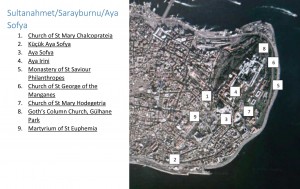
1. Church of St Mary Chalcoprateia/Khalkopratia
2. Küçük Aya Sofya/Church of St Serge and St Bacchus
3. Aya Sofya/The Church of the Divine Wisdom
4. Aya Irini/ The Church of Hagia Eirene/The Church of the Divine Peace
5. Monastery of St Saviour Philanthropes
6. Church of St George of the Manganes
7. Church of St Mary Hodegetria
8. Goth’s Column Church, Gülhane Park (Orphanage of St Paul/St Demetrios/St Menas)
9. Martyrium of St Euphemia
10. Churches in the region of the Great Palace.
11. The Palace Basilica.
12. Chapels in the Bucoleon Palace
13. Churches in the Palace of Botaneiates
14. The Church at Cankurtaran
15. The cistern underneath Sarnıç Nargile Café
16. Kapι Agasι Camii/ Mahmut Aga Camii
17. Ayazma underneath Sedir’s Carpet Shop/Kirkit Travel
18. The Church in Günaydın Carpark

Posted June 8, 2014 Posted by Adam in Uncategorized
This is the south-central area of walled Constantinople. It is a region of quiet streets and little building activity. The absence (as yet) of urban renewal means that community structures are still intact. Nowhere is this more obvious than at Kocamustafapaşa Camii, the descendant of the ancient Church of St Andrew in Krisei. Apart from this building, the Byzantine monuments are fragmented and widely separated. A short distance outside the walls is the Balıklı Monastery with a sacred spring that made this a place of pilgrimage since before Roman times.
Monastery church of Gastria/Sancaktar Mescidi
Kocamustafapaşa Camii/Church of St Andrew in Krisei/Sümbül Camii
İsakapı Mescidisi, Ibrahim Paşa Medresesi
Yenikapı
The Shrine of Zoodochus Pege/Balıklı Kilise/The Ayazma of Pege/Balıklı Meryem Ana Rum Ortodoks Manastırı

Posted June 8, 2014 Posted by Adam in Uncategorized
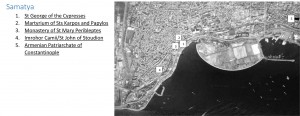 Samatya is the area inside the sea walls on the Marmara sea side. There are no intact Byzantine buildings here but a lot of interesting remains and links with the glories of Constantinople. Samatya probably has the highest density of churches anywhere in Istanbul. The buildings themselves are almost all from the 19th century although many are built over the foundations of churches from Byzantine times. Samatya is the only part of Istanbul to retain its Greek name. Most of the churches are Greek but this area has a strong Armenian presence, the Patriarchate being at Kumkapı. The major Byzantine monuments are the fortress of Yedikule with its increasingly redundant Triumphal Gate, and what is left of the once-fabulous Monastery of St John of Studion.
Samatya is the area inside the sea walls on the Marmara sea side. There are no intact Byzantine buildings here but a lot of interesting remains and links with the glories of Constantinople. Samatya probably has the highest density of churches anywhere in Istanbul. The buildings themselves are almost all from the 19th century although many are built over the foundations of churches from Byzantine times. Samatya is the only part of Istanbul to retain its Greek name. Most of the churches are Greek but this area has a strong Armenian presence, the Patriarchate being at Kumkapı. The major Byzantine monuments are the fortress of Yedikule with its increasingly redundant Triumphal Gate, and what is left of the once-fabulous Monastery of St John of Studion.
St George of the Cypresses
Martyrium of Saints Karpos and Papylos
Monastery of St Mary Peribleptes/Armenian Church of St Kevork (George)/Sulu Manastir
Imrohor Camii/St John of Stoudion/Studius

Posted June 7, 2014 Posted by Adam in Uncategorized
This is a lovely area in which you will inevitably get lost. it used to be a zone of outlying summer palaces and monasteries. A couple of the palaces are still set into the walls. The remains of several others, particularly Blachernae and Bonos, rear up above the ground in unexpected ways. Inevitably, the palaces have churches associated with them. Most of the Byzantine churches around have gone or are disappearing fast.
However after the conquest, a strip of churches began to flourish along the Golden Horn. The Ecumenical Patriarchate was demoted to this area in the 16th century and after a few false starts came to rest at the current location in Fener. The Feneriot empire began – the zone of rich non-Turks who made an excellent living negotiating between the providers of foreign goods and services and the Ottomans who found it demeaning to use other languages. Other patriarchates set up Metochions in the area and the breakaway Bulgars established their exarchate here.
Kanlı Kilise, The Church of Theotokos Panaghiotissa, The Mouchliotissa, “St Mary of the Mongols”
Church of St Peter and St Mark/Atık Mustafa Paşa Camii/Kocamustafa Camii/Hasret-I Cabir
Patriarchal Church of St George/The Greek Orthodox Patriarchate
St Demetrios Xyloportas, Balat
Vlach Saray/Church of the Panaghia Paramithias/Palace of the Wallachians
Toklu Ibrahim Dede Mescidisi/Church of St Thecla
The Ayazma of Blachernae/Panayia Blachernae Ayasmasi/Church of Meryem Ana at Blachernae
St Stephen Bulgarian Orthodox Church
The Metochion of Jerusalem
The Metochion of Sinai
The Church of St Nicholas
Posted June 6, 2014 Posted by Adam in Uncategorized
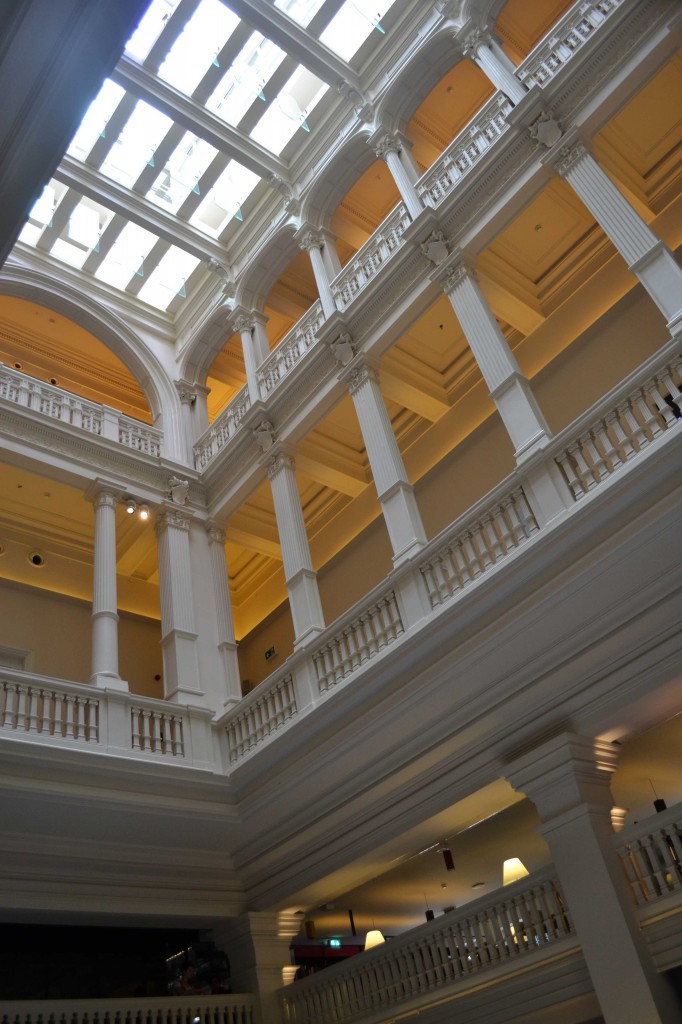

« Previous Entries Next Entries »
